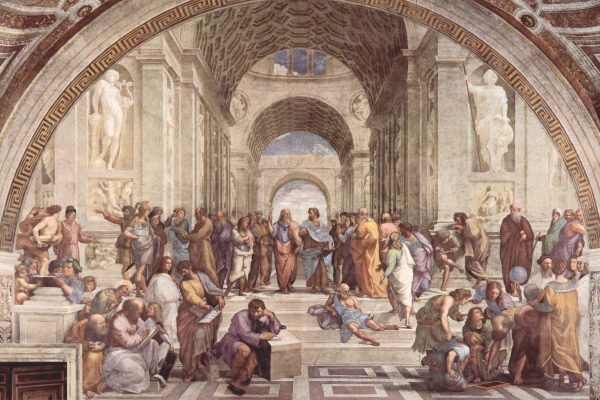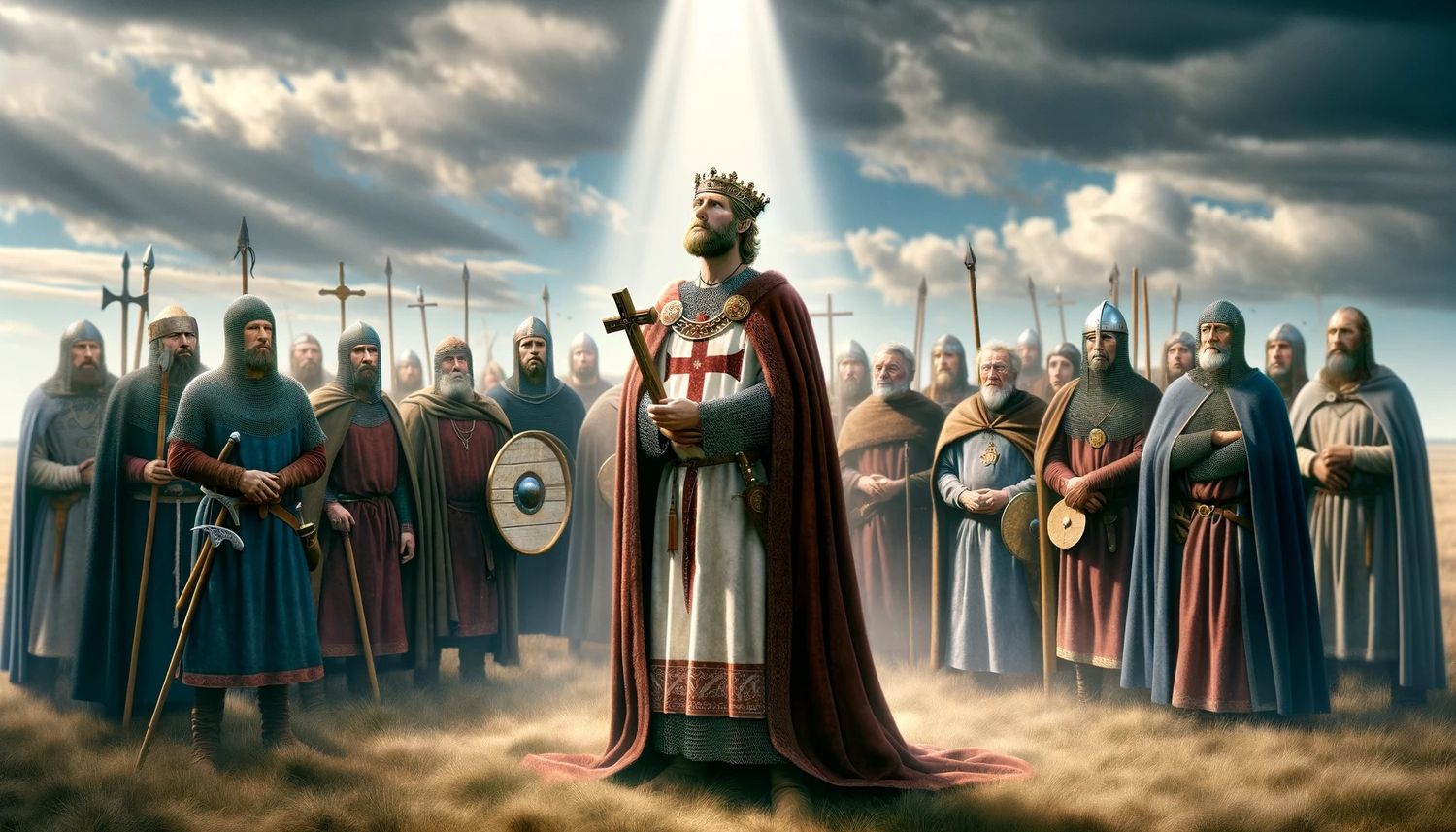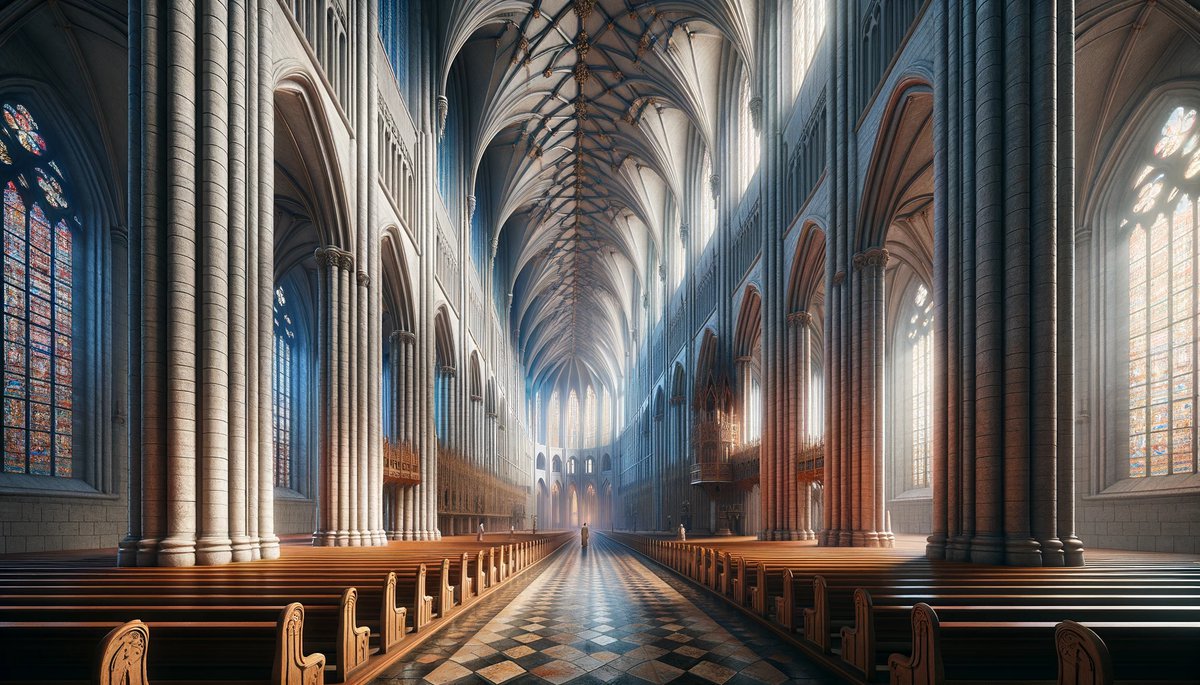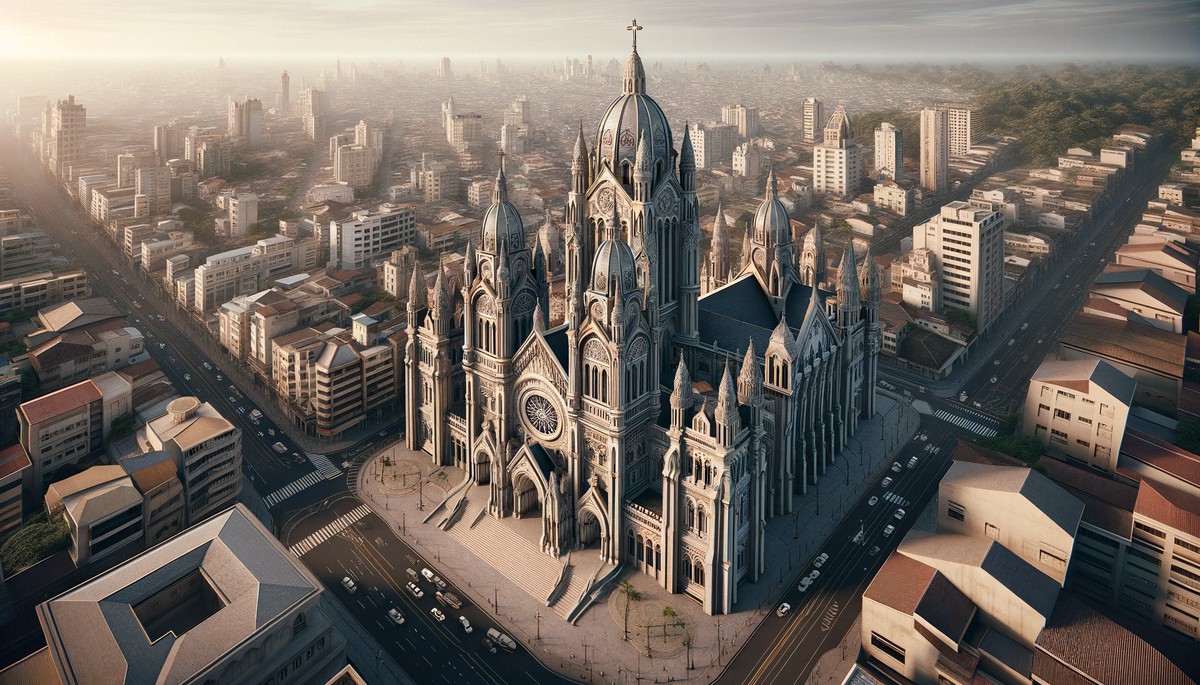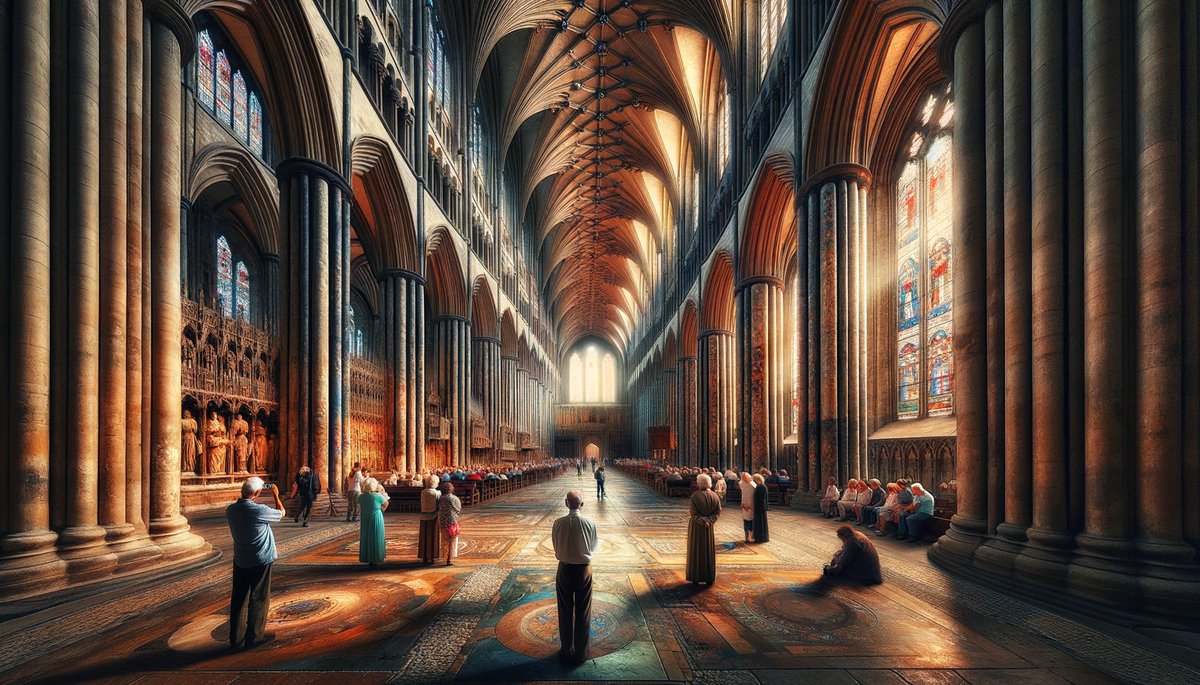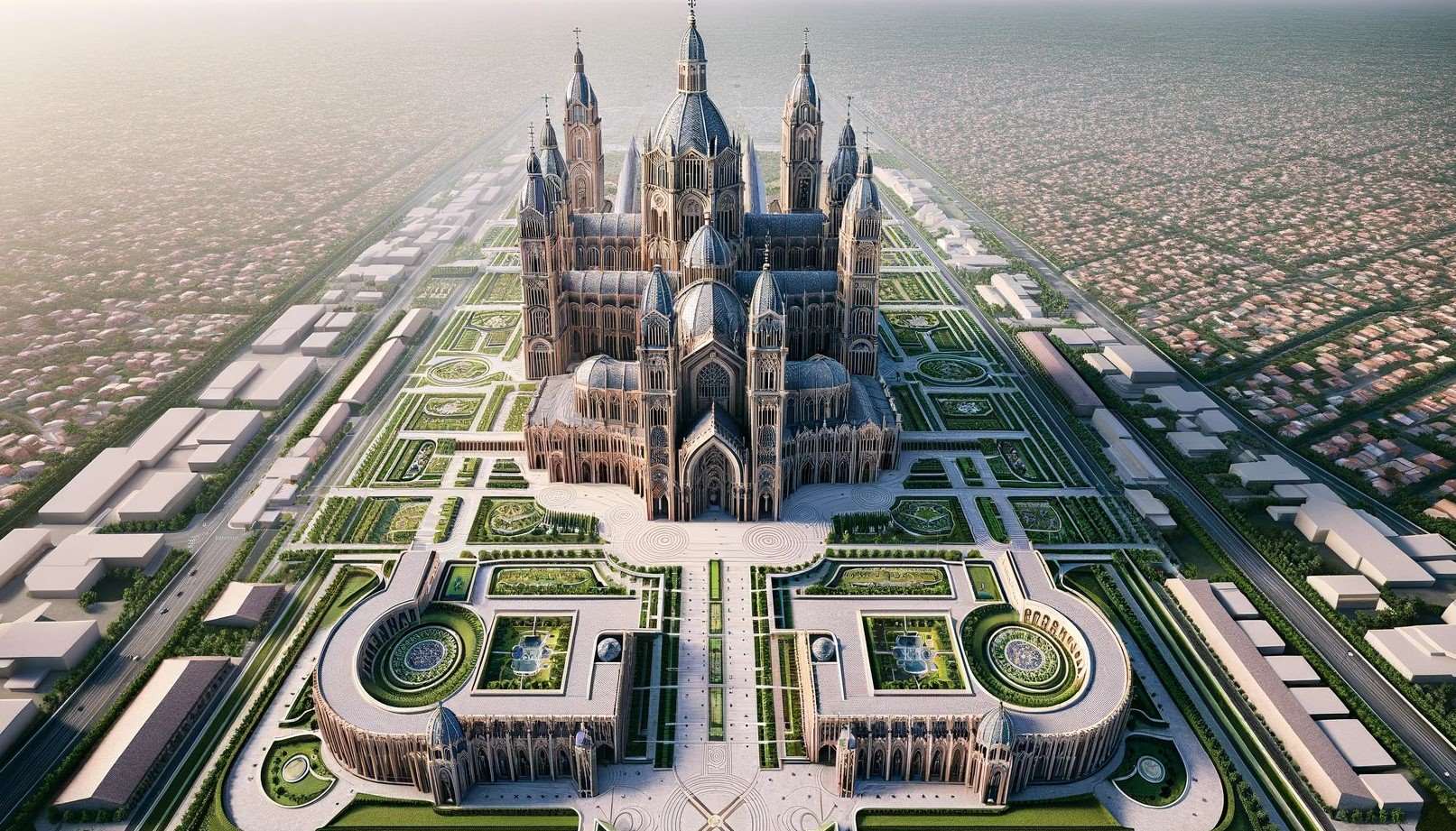Home>Arts and Culture>What Is The Cologne Cathedral Known For


Arts and Culture
What Is The Cologne Cathedral Known For
Published: February 15, 2024
Jason DeRose, Managing Editor at Christian.net, uses his expertise in religion and journalism to deepen understanding of faith's societal impacts. His editorial leadership, coupled with a strong academic background, enriches the platform’s diverse content, earning him recognition in both journalism and religious circles.
Discover the rich history and stunning architecture of the Cologne Cathedral, a masterpiece of arts and culture in Germany. Explore its iconic landmarks and learn about its significance in European history.
(Many of the links in this article redirect to a specific reviewed product. Your purchase of these products through affiliate links helps to generate commission for Christian.net, at no extra cost. Learn more)
Table of Contents
Introduction
The Cologne Cathedral, also known as Kölner Dom, is a magnificent architectural marvel that stands as a symbol of faith, history, and human ingenuity. This awe-inspiring Gothic masterpiece has captured the hearts and minds of countless visitors from around the world, drawing them to its grandeur and spiritual significance.
Rising majestically along the banks of the Rhine River in Cologne, Germany, the Cologne Cathedral is a testament to the dedication and craftsmanship of countless artisans and builders who devoted themselves to its construction over several centuries. Its towering spires and intricate façade command attention, evoking a sense of wonder and reverence in all who behold it.
As one of the most iconic landmarks in Europe, the Cologne Cathedral holds a special place in the hearts of locals and tourists alike. Its imposing presence and rich history make it a focal point for cultural, religious, and architectural enthusiasts, drawing them to explore its hallowed halls and delve into the stories etched within its walls.
This article delves into the captivating tale of the Cologne Cathedral, unraveling its historical significance, architectural splendor, and cultural impact. From its origins to its enduring legacy, we will embark on a journey to uncover the secrets and wonders that make the Cologne Cathedral a timeless beacon of human achievement and spiritual devotion.
Read more: When Was Cologne Cathedral Built
History of the Cologne Cathedral
The history of the Cologne Cathedral is a saga of unwavering determination, resilience, and unwavering faith that spans over seven centuries. The foundation stone of this monumental structure was laid in 1248, with the ambitious vision of creating a cathedral that would surpass all others in grandeur and magnificence. However, the road to completion was fraught with challenges and setbacks, leading to a prolonged construction period that lasted until 1880.
The cathedral's construction was interrupted for over 300 years, during which it remained incomplete and exposed to the elements. Despite these adversities, the Cologne Cathedral endured as a symbol of resilience and unwavering commitment to its realization. The resumption of construction in the 19th century marked a renewed dedication to fulfilling the vision of its creators, culminating in the triumphant completion of this architectural masterpiece.
Throughout its tumultuous history, the Cologne Cathedral bore witness to the rise and fall of empires, survived wars and conflicts, and stood as a symbol of hope and perseverance for the people of Cologne and beyond. Its enduring presence serves as a testament to the unwavering spirit of humanity and the enduring power of faith and creativity.
The cathedral's history is also intertwined with the veneration of the Three Wise Men, whose relics were brought to Cologne in the 12th century. This sacred connection elevated the cathedral to a place of pilgrimage and spiritual significance, drawing countless devotees and visitors seeking solace and inspiration within its hallowed walls.
Today, the Cologne Cathedral stands as a living testament to the indomitable human spirit and the enduring legacy of those who dedicated their lives to its creation. Its rich history continues to captivate the imagination of all who gaze upon its majestic spires, inviting them to delve into the remarkable tale of perseverance, faith, and artistic brilliance that defines this extraordinary architectural wonder.
Architectural Features
The Cologne Cathedral stands as a paragon of Gothic architecture, boasting a myriad of awe-inspiring features that have captivated admirers for centuries. Its soaring spires, intricate façade, and meticulous detailing exemplify the pinnacle of medieval craftsmanship and artistic ingenuity.
Majestic Spires
The cathedral's twin spires, reaching a height of over 157 meters, dominate the Cologne skyline, serving as a testament to the skill and dedication of the master builders who brought this vision to life. These spires, adorned with delicate tracery and sculpted elements, stand as a symbol of aspiration and spiritual transcendence, drawing the eyes of onlookers heavenward.
Intricate Facade
The intricately carved facade of the Cologne Cathedral is a masterpiece of stone masonry, adorned with countless sculptures and reliefs that depict biblical narratives, saints, and symbolic motifs. Every arch, column, and gargoyle is a testament to the meticulous artistry and devotion poured into every aspect of the cathedral's design, inviting visitors to marvel at the depth of detail and storytelling etched into its stone walls.
Read more: Who Built The Cologne Cathedral
Stained Glass Windows
The cathedral's interior is adorned with a stunning collection of stained glass windows, renowned for their vibrant hues and intricate designs. These windows, dating back to different periods of the cathedral's history, illuminate the sacred space with a kaleidoscope of colors, casting ethereal light that bathes the interior in a transcendent glow.
Nave and Choir
The grand nave and choir of the Cologne Cathedral exude a sense of divine grandeur, with towering columns, ribbed vaults, and ornate decorations that create an atmosphere of reverence and solemnity. The intricate network of stone tracery and delicate filigree work adorning the nave and choir exemplifies the mastery of Gothic architecture, inviting visitors to immerse themselves in the sublime beauty of this sacred space.
Bell Towers
The cathedral houses a magnificent array of bells, including the monumental St. Peter's Bell, which weighs over 24,000 kilograms and resonates with a deep, sonorous tone that reverberates throughout the city. These bells, each with its own unique timbre and history, add a melodic dimension to the cathedral's presence, marking the passage of time and calling the faithful to prayer.
The architectural features of the Cologne Cathedral stand as a testament to the enduring legacy of Gothic artistry and the profound spiritual significance embodied within its walls. Each element, from the soaring spires to the intricate carvings, weaves a narrative of faith, creativity, and human aspiration, inviting all who behold it to partake in its timeless splendor.
Art and Relics
The Cologne Cathedral is not only a testament to architectural brilliance but also a treasure trove of priceless art and revered relics that enrich its sacred ambiance. Within its hallowed halls, a wealth of artistic masterpieces and sacred artifacts awaits, each bearing a profound significance that transcends time and space.
Read more: What Is Sistine Chapel Known For
Priceless Artwork
The cathedral houses a remarkable collection of religious art, including exquisite altarpieces, sculptures, and paintings that reflect the depth of devotion and artistic expression prevalent during the medieval and Renaissance periods. These works of art, crafted by renowned artists of their time, adorn the cathedral's chapels and sanctuaries, infusing the sacred space with a sense of transcendent beauty and spiritual contemplation.
One of the most renowned treasures is the Gero Crucifix, a monumental wooden crucifix dating back to the 10th century. This awe-inspiring sculpture, attributed to the masterful hands of an anonymous artist, stands as one of the oldest surviving large-scale crucifixes of the medieval era, captivating visitors with its emotive portrayal of Christ's suffering and redemption.
Sacred Relics
The Cologne Cathedral holds a place of profound veneration as the resting place of the relics of the Three Wise Men, also known as the Magi or Kings. These revered relics, brought to Cologne in the 12th century, have drawn pilgrims and devotees from far and wide, seeking solace and spiritual communion in the presence of these esteemed symbols of faith.
The Shrine of the Three Kings, a magnificent gilded sarcophagus adorned with intricate carvings and precious gems, enshrines the relics of the Magi, serving as a focal point for prayer, contemplation, and pilgrimage. The shrine's opulent beauty and historical significance make it a revered symbol of the cathedral's spiritual heritage and enduring connection to the Christian faith.
Illuminated Manuscripts
In addition to its tangible artworks and relics, the Cologne Cathedral safeguards a collection of illuminated manuscripts, including intricately decorated biblical texts and liturgical books. These exquisite manuscripts, adorned with vibrant illustrations and ornate calligraphy, offer a glimpse into the rich tradition of medieval bookmaking and the reverence accorded to sacred texts within the cathedral's walls.
The art and relics housed within the Cologne Cathedral stand as a testament to the enduring legacy of faith, creativity, and cultural heritage. Each masterpiece and sacred artifact bears witness to the profound devotion and artistic ingenuity of generations past, inviting visitors to immerse themselves in the timeless beauty and spiritual significance enshrined within this architectural marvel.
Importance as a Religious Site
The Cologne Cathedral holds profound significance as a revered religious site, serving as a beacon of faith, pilgrimage, and spiritual communion for devout worshippers and seekers of divine inspiration. Its hallowed halls and sacred relics bear witness to centuries of devotion and veneration, drawing pilgrims and visitors from across the globe to partake in its sanctity and historical resonance.
As the resting place of the relics of the Three Wise Men, the Cologne Cathedral stands as a testament to the enduring legacy of Christian faith and the veneration of sacred relics. The Shrine of the Three Kings, adorned with precious metals and gemstones, serves as a focal point for prayer and contemplation, inviting pilgrims to pay homage to these esteemed symbols of faith and seek spiritual solace within the cathedral's embrace.
The cathedral's significance as a religious site is further underscored by its role as a center of pilgrimage, drawing believers and seekers of spiritual enlightenment to embark on a journey of faith and reflection. The allure of the cathedral's sacred relics and the palpable aura of reverence that permeates its sacred spaces inspire pilgrims to undertake a profound inward journey, seeking spiritual renewal and a deeper connection to their faith.
Moreover, the Cologne Cathedral stands as a living testament to the enduring power of Christian tradition and the continuity of religious practice across generations. Its sacred rituals, including Masses, liturgical celebrations, and veneration of relics, uphold the timeless traditions of the Christian faith, fostering a sense of continuity and spiritual heritage that resonates deeply with worshippers and visitors alike.
The cathedral's importance as a religious site extends beyond its physical presence, transcending time and space to evoke a sense of spiritual transcendence and divine grace. Its towering spires and sacred artifacts serve as conduits for spiritual contemplation and communion, inviting all who enter its sacred precincts to partake in the timeless rituals of faith and seek solace in the embrace of the divine.
In essence, the Cologne Cathedral stands as a testament to the enduring power of faith, the sanctity of religious tradition, and the universal yearning for spiritual connection. Its significance as a religious site resonates with believers and seekers alike, offering a sanctuary for the soul and a timeless testament to the enduring legacy of faith and devotion.
Cultural Significance
The cultural significance of the Cologne Cathedral transcends its religious prominence, encompassing its profound impact on art, history, and the collective identity of the city of Cologne. As a towering symbol of human achievement and architectural splendor, the cathedral has become an enduring emblem of cultural heritage, drawing admirers and scholars to unravel its multifaceted significance.
From an artistic perspective, the Cologne Cathedral stands as a pinnacle of Gothic architecture, exemplifying the zenith of medieval craftsmanship and artistic ingenuity. Its soaring spires, intricate carvings, and awe-inspiring stained glass windows serve as a testament to the enduring legacy of Gothic artistry, inspiring generations of artists, architects, and craftsmen to emulate its grandeur and spiritual resonance. The cathedral's influence on art and architecture extends far beyond its physical presence, permeating the cultural landscape with a profound appreciation for the timeless beauty and transcendent power of Gothic design.
Furthermore, the cathedral's historical resonance and enduring legacy have woven it into the fabric of Cologne's cultural identity, shaping the city's narrative and serving as a touchstone for collective memory and pride. The cathedral's tumultuous history, from its interrupted construction to its triumphant completion, mirrors the resilience and fortitude of the people of Cologne, forging a deep-seated connection between the cathedral and the city's spirit of perseverance and cultural heritage. Its status as a UNESCO World Heritage site further underscores its significance as a cultural treasure of global importance, cementing its place as a cherished symbol of human creativity and historical continuity.
Moreover, the Cologne Cathedral's role as a center of pilgrimage and spiritual contemplation has fostered a rich tapestry of cultural traditions and rituals, infusing the city with a palpable aura of reverence and spiritual resonance. Its annual celebration of the arrival of the Three Wise Men, known as the "Kölner Dreikönigssingen," brings together communities in a vibrant display of music, pageantry, and religious devotion, uniting people from diverse backgrounds in a shared celebration of faith and cultural heritage.
In essence, the Cologne Cathedral's cultural significance extends far beyond its architectural magnificence and religious import, weaving a rich tapestry of art, history, and communal identity that resonates with admirers and inhabitants alike. Its enduring legacy as a beacon of human creativity and spiritual transcendence cements its place as a cultural treasure of immeasurable value, inviting all to partake in its timeless splendor and cultural resonance.
Conclusion
In conclusion, the Cologne Cathedral stands as a timeless testament to the indomitable spirit of human creativity, faith, and cultural heritage. From its storied history to its awe-inspiring architectural features, the cathedral embodies the enduring legacy of Gothic artistry and the profound significance of religious devotion. Its towering spires, intricate carvings, and sacred relics weave a narrative of resilience, artistic brilliance, and spiritual transcendence, inviting visitors to embark on a journey through the annals of history and the depths of faith.
As a revered religious site, the Cologne Cathedral holds a place of profound veneration, drawing pilgrims and worshippers to seek solace and spiritual communion within its hallowed halls. The presence of the relics of the Three Wise Men and the cathedral's role as a center of pilgrimage underscore its enduring significance as a sanctuary for the soul and a testament to the continuity of religious tradition.
Furthermore, the cultural significance of the cathedral resonates deeply with admirers and scholars, shaping the collective identity of Cologne and permeating the cultural landscape with a profound appreciation for its historical resonance and architectural splendor. Its influence on art, history, and the city's cultural narrative cements its place as a cherished symbol of human achievement and historical continuity, transcending time and space to evoke a sense of wonder and reverence.
In essence, the Cologne Cathedral stands as a living embodiment of the enduring power of faith, the timeless beauty of Gothic artistry, and the universal yearning for spiritual connection. Its significance as a cultural and religious treasure resonates with visitors from all walks of life, offering a sanctuary for the soul and a timeless testament to the enduring legacy of human creativity and devotion. As the sun sets behind its majestic spires, the Cologne Cathedral stands as a beacon of hope, a testament to the resilience of the human spirit, and an enduring symbol of faith and cultural heritage for generations to come.

